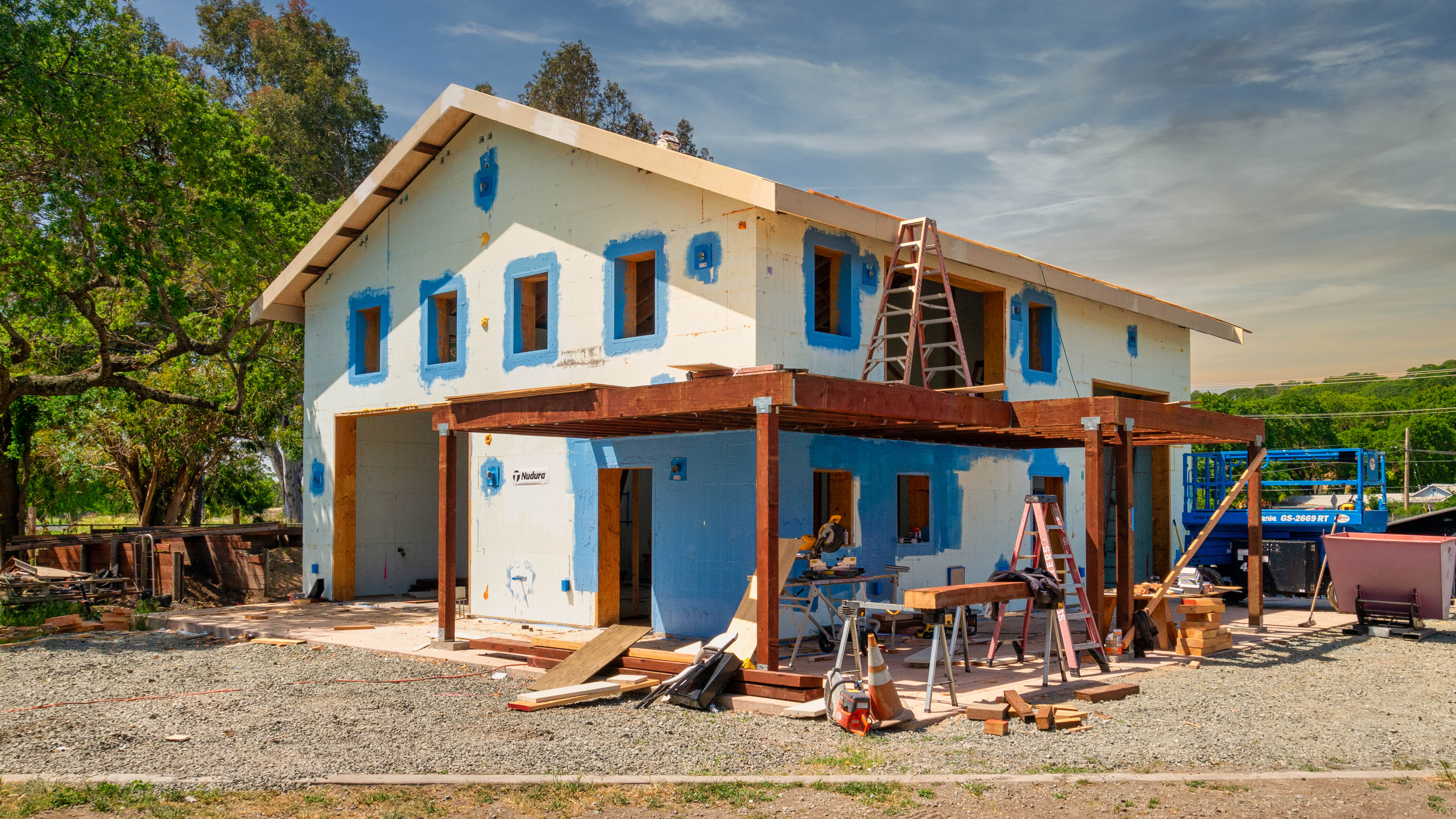
- Products
- Why Nudura
- Nudura Project Applications
- Training Academy
- Resources
- Company
Eco-friendly homes and buildings are becoming increasingly popular as consumers and companies aim to minimize their environmental impacts. More than simply adding energy-efficient appliances, sustainable design now starts at the very beginning during the architectural planning phase. Take a look at some of the other green trends in building design:
Retrofitting mania
More urban centers lack “missing middle” housing supply that can reduce sprawl and protect green spaces. To work around this shortage, homeowners and planners are finding creative solutions to make the most of existing neighborhoods without drastically altering their character and charm.
Some are building laneway homes, while others are retrofitting older homes to meet evolving needs, including improved energy efficiency. These century homes are being upgraded with wind turbines, solar panels, and cleaner HVAC systems, thereby reducing their overall carbon footprint.
Biotech living buildings
While it may seem like something out of a futuristic science fiction film, buildings that grow, live, breathe, and even reproduce are now possible and can play a valuable role in easing the climate crisis.
For example, researchers are developing microbial fuel cells that can take domestic waste and generate small amounts of power, which can then be integrated into bricks. Another promising idea is bio-receptive surfaces, which promote the growth of good bacteria and can be used for kitchen counters to boost people’s immune systems.
Eco-friendly materials
From solar panels to bamboo to formaldehyde-free kitchens, it’s all about consciously selecting materials and products that minimize waste, conserve energy, and create a healthier indoor environment.
One innovative material that architects and end-users alike love for its sustainable design is insulated concrete forms. Offering superior energy efficiency, consistency in performance, and lower utility costs than wood framing, ICFs are a responsible choice for an eco-friendly home or net-zero building. For maximum design flexibility, Nudura interlocking blocks can be custom cut any shape or radius to create unique custom structures.
Water conservation measures
With climate change affecting global water supplies while increasing temperatures and droughts, reducing water consumption has never been more important. Including water efficiency strategies is also a requirement of many certification programs, such as LEED.
One way engineers are incorporating water conservation into their designs is by adding water-recovery and rainwater-catchment systems to their structures. Meanwhile, architects are replacing asphalt shingles with beautiful green roofs. Made up of diverse plants, green roofs have longer lifespans and can absorb storm water that would otherwise end up in sewers and require treatment.
Learn more about Net-Zero Construction
How do you design buildings that will produce as much energy as they consume during a year?
CONTACT US
We’re committed to supporting homeowners and design professionals who are interested in or use our products. We’re always happy to help and provide more information.




